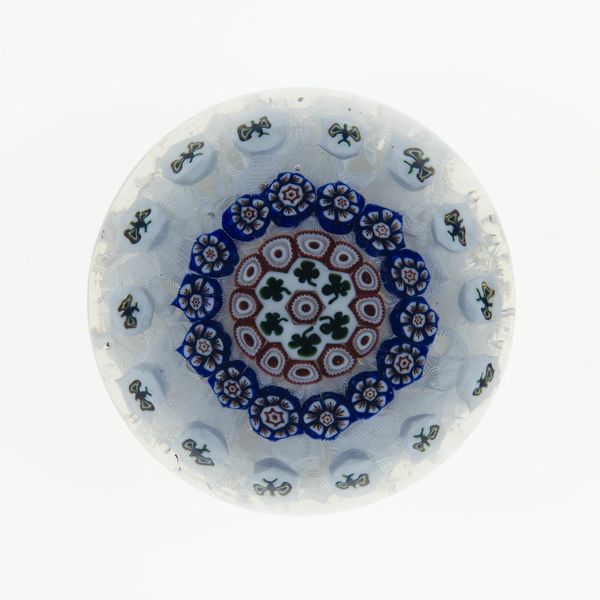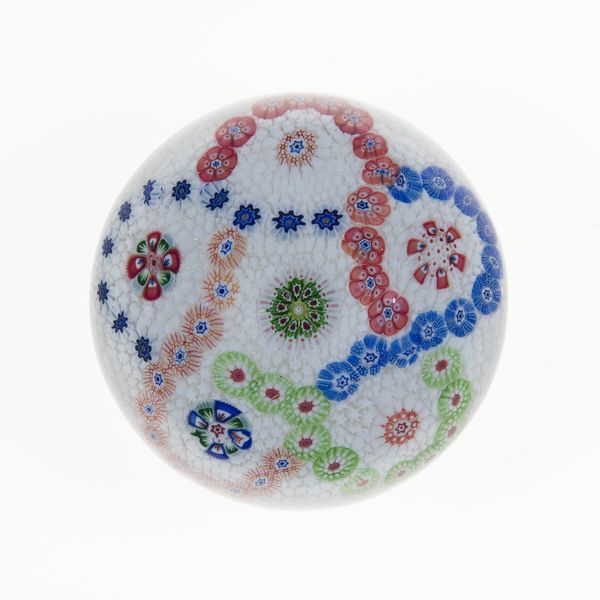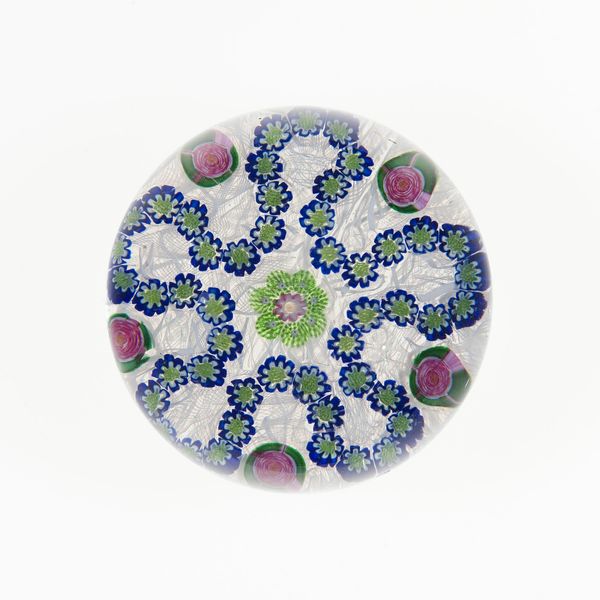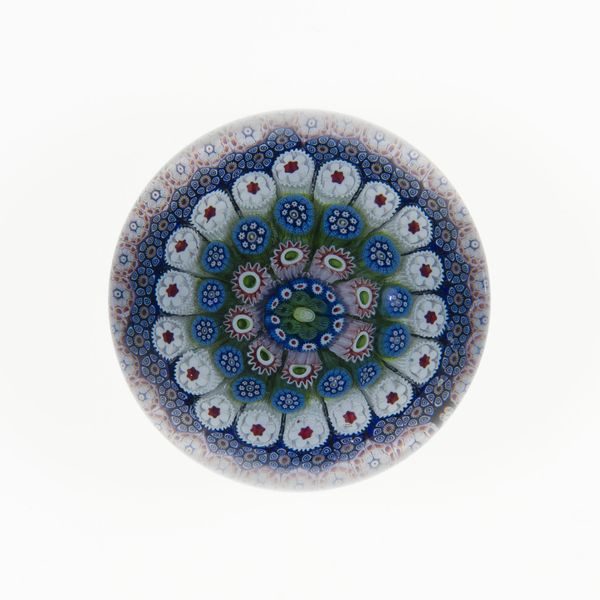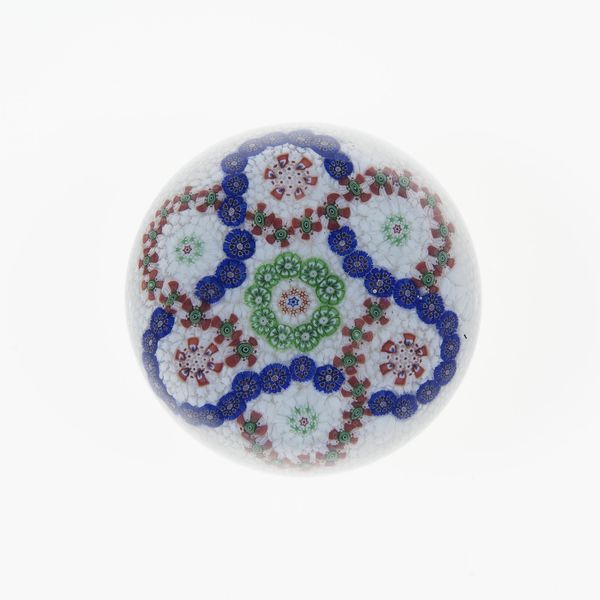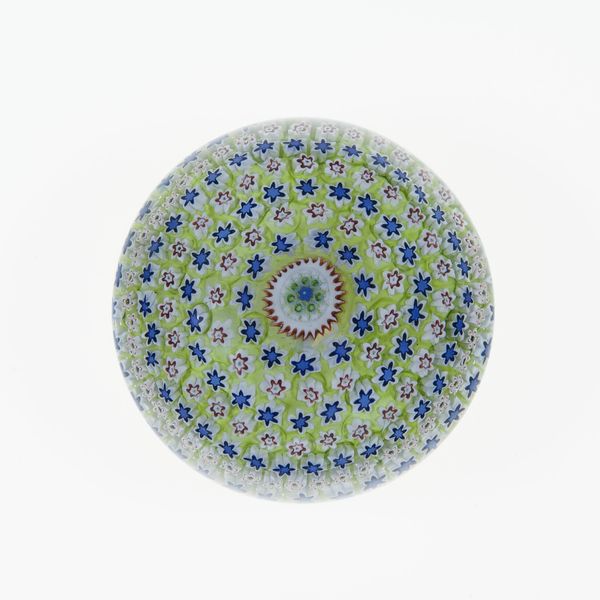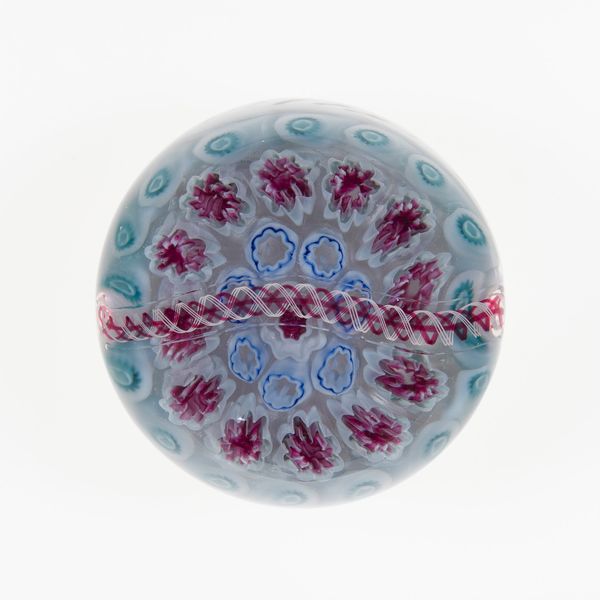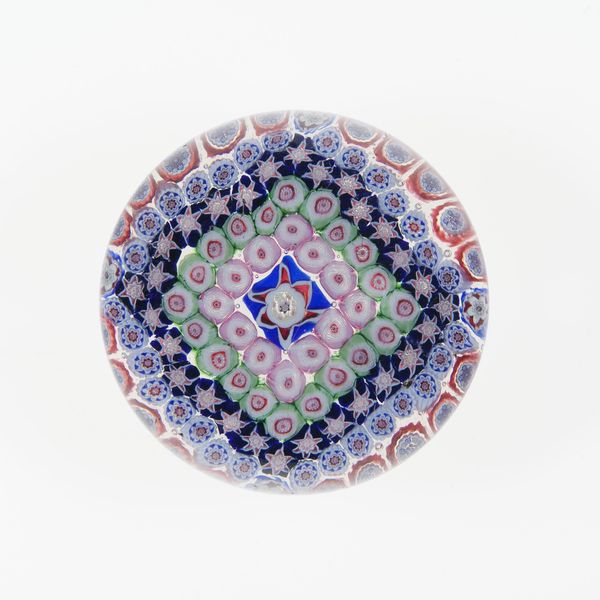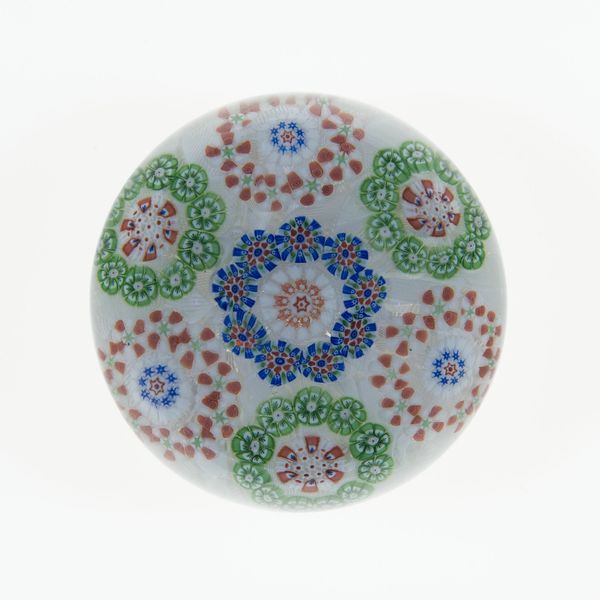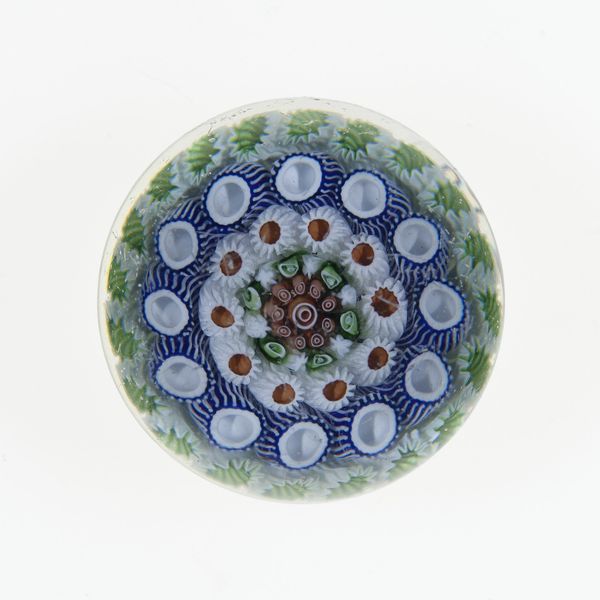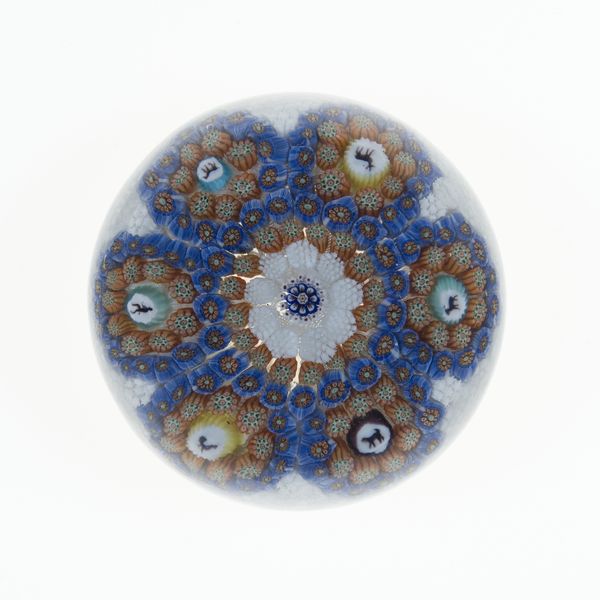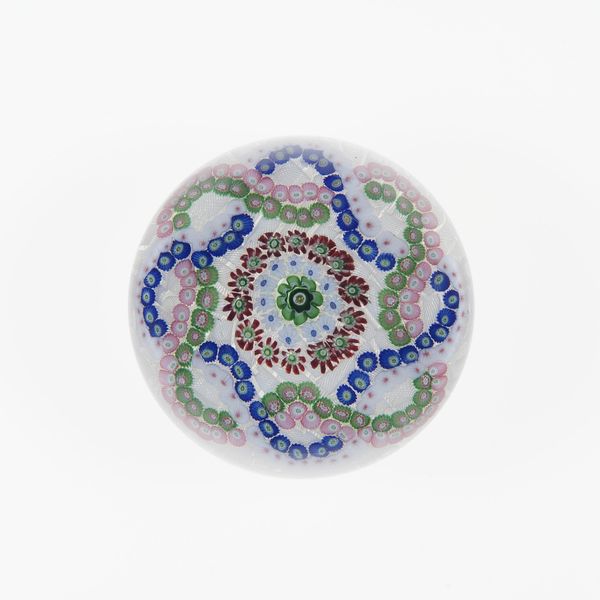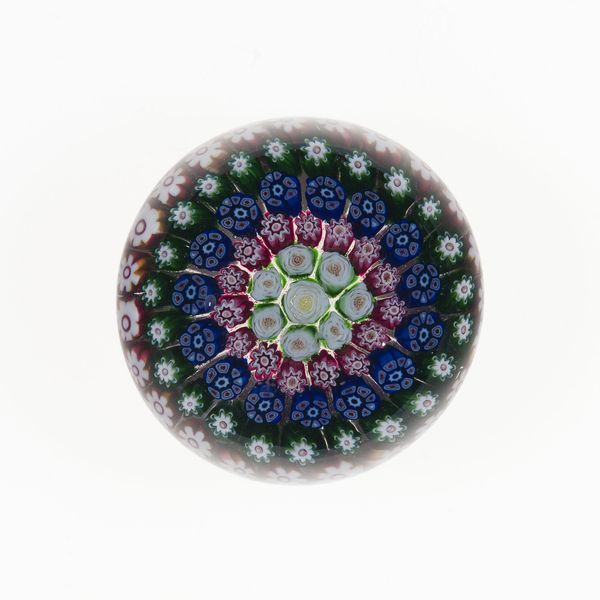
Dimensions: Diam. 7.6 cm (3 in.)
Copyright: Public Domain
Curator: Take a look at this intricate "Paperweight," created by the Baccarat Glassworks, dating roughly from 1845 to 1860. The mosaic pattern is captivating, isn’t it? Editor: Absolutely, my first impression is one of order emerging from complexity. The sphere feels like a miniature, self-contained cosmos of colourful geometric blooms. Curator: The symmetry speaks volumes, doesn’t it? We must contextualize decorative arts in France within its cultural moment; glass production shifted to the industrial era around this time, yet luxury designs persisted. Baccarat targeted the bourgeoisie—their rise was connected to larger systemic economic and political power shifts. Editor: Precisely. The tight mosaic, comprised of hundreds of tiny, flower-like glass canes. Each "flower," acts like a symbol repeated across generations—think of a similar patterning, perhaps a tiled Byzantine floor, suggesting stability, permanence and craftmanship. Curator: And that’s very different from thinking about art as an autonomous act. Craft always has a functional goal—or perhaps, a symbolical one in class identity. It speaks of values upheld or yearned. Looking closer, one can perceive a central tension embedded in the repetitive pattern—is this meant for everyday use or display of privilege? Editor: The colours themselves—sapphire, emerald, sienna—are so striking given they have very few natural analogs outside precious minerals or fauna and flora of great value, imbuing even everyday life with some grandeur. Curator: Grandeur intended as an affirmation of social position. The owner asserts their place, while implicitly mirroring societal divides. Consider that paperweights coincided with widespread industrial writing and record-keeping, making glass creations doubly suggestive of a society obsessed with paper, finance and power. Editor: That tension adds a further layer: mass literacy facilitated new democratic ideas that class privilege tried to control. This item therefore contains counter symbolism. A delicate but firm aesthetic power grab that seems to deny alternative world models. Curator: Right, reflecting both the embrace of industry, wealth and an active attempt to constrain new progressive paradigms that questioned the foundations of power during that moment in history. The “Paperweight” becomes anything *but* innocuous! Editor: Exactly, art endures both as testimony, memory and forward momentum in history itself, prompting dialogues in new exciting forms across the present and futures to come!
Comments
No comments
Be the first to comment and join the conversation on the ultimate creative platform.
